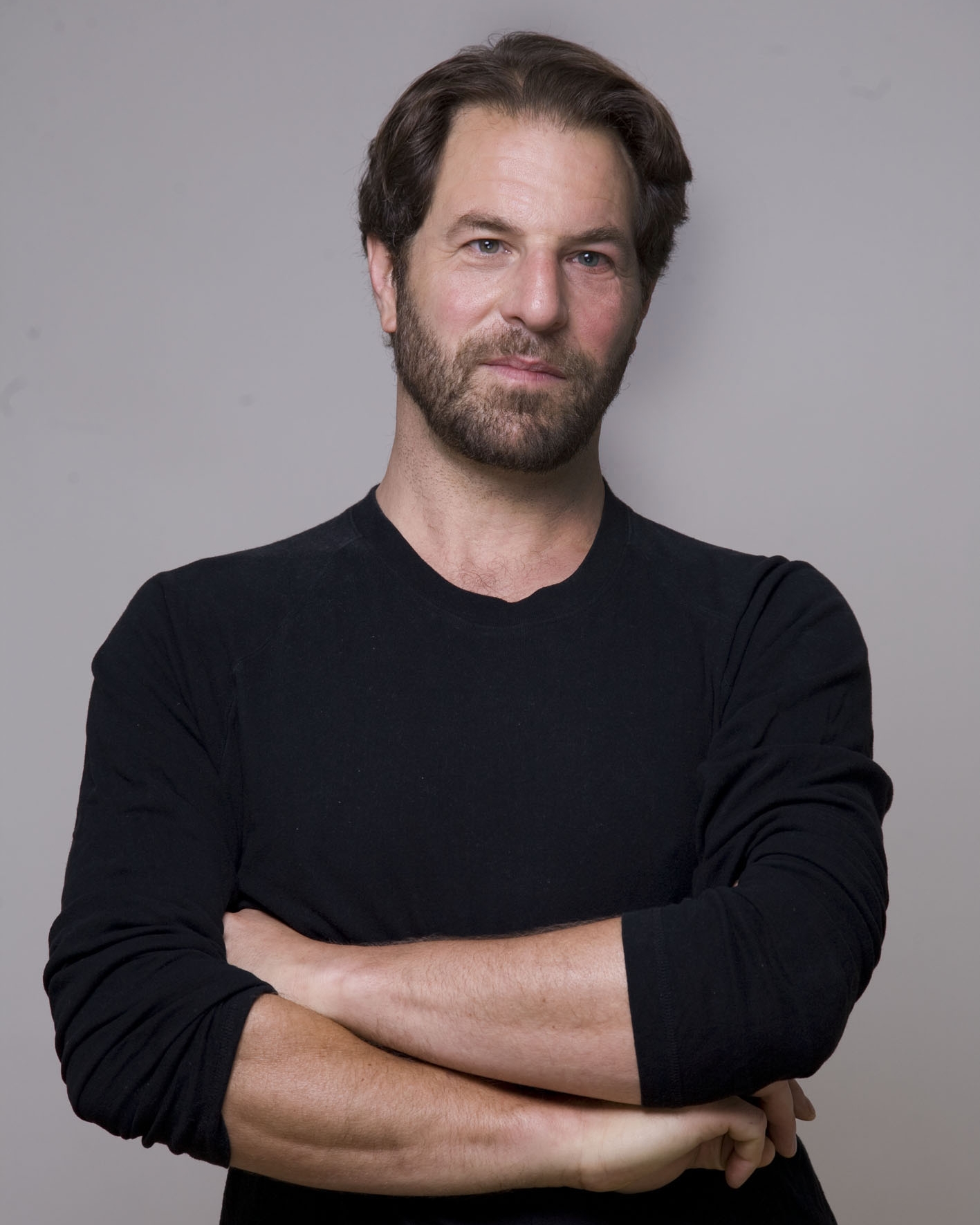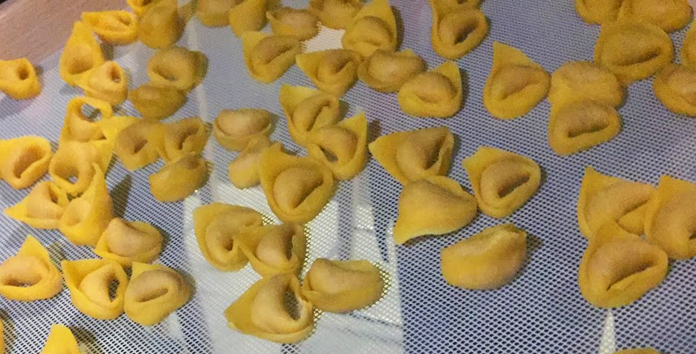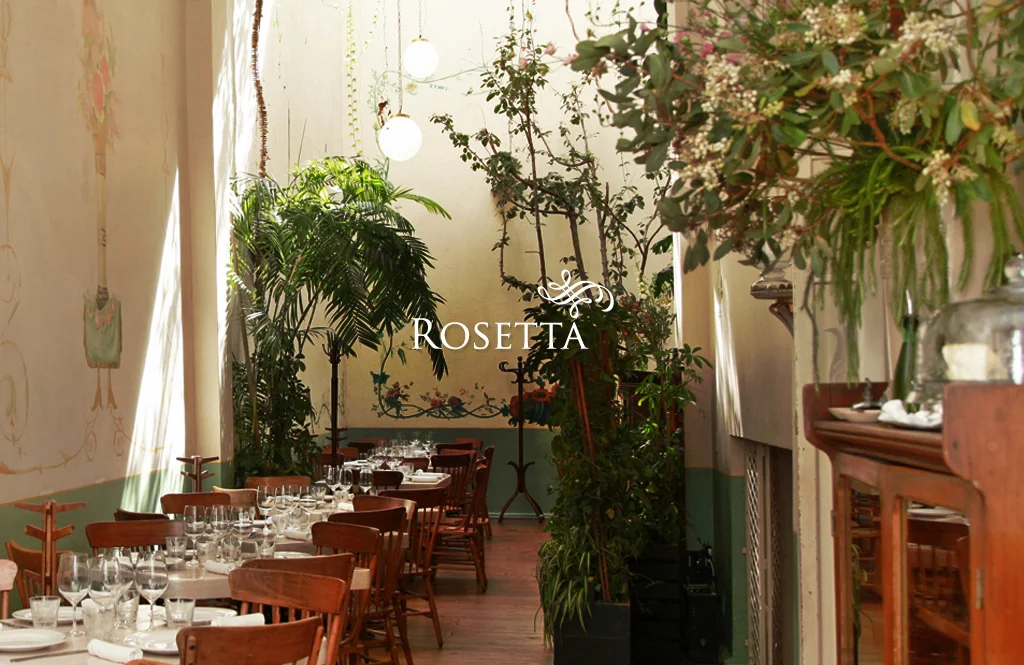Questions for the Chef: Marco Carboni, Sartoria and All That Pasta
It was at an Italianate pop-up dinner held in a Greenwich Village-like townhouse in Mexico City that I first laid eyes on chef Marco Carboni. He had prepared, according to my notes, “tortellacci that were perfectly al dente, filled with artichokes, sauced with a lightly tart chevre and flecked with woodsy hazelnuts.” This was the most intriguing pasta dish that I and my companion, an accomplished Italy-trained chef himself had been privileged to sample in Mexico to date. The tall, handsome and affable maker of that extraordinary pasta spent the next year and a half quietly forging a life in Mexico, teaching, cooking for friends, consulting and marrying Mexican Carmen Kabel. Then, suddenly, a new restaurant whose kitchen he fronts opened its doors to little fanfare. Sartoria, in Colonia Roma, was slickly designed by Taller ADG who also did N.Y.'s Cosme. It has been lauded by the few who have had the pleasure of eating there. It features, surprise, surprise: pasta. But oh, what pasta: for it turns out that the chef, who hails from Modena in northern Italy, has worked the kitchen of the world’s top chef Massimo Bottura, not to mention that of Jamie Oliver and Jordi Vilá’s Alkimia in Barcelona. He knows what he is doing. At 32, Marco has been toiling in the food industry for 12 years and picked up a sommelier’s degree along the way. I had the opportunity to chat with the soft-spoken chef, who speaks perfect, British-accented English, the day after the smallish restaurant opened its doors to the public. It’s just up from Plaza Rio de Janeiro; the reproduction of Michelangelo’s David looks on expectantly. Visibly weary, Marco became animated as he relayed his life story.
NG: Where and when did your interest in food start?
Chef Marco Carboni
MC: I was born in the countryside near Modena [in the northern Italian region of Emilia-Romagna, 90 miles north of Florence]. I guess being at home alone—my parents were working—I was left to fend for my brother and myself. So I had to cook. My father had a great passion for ingredients: he always bought the best parmesan, the best vegetables. He even used to make his own balsamic vinegar – not only the vinegar but the barrels too! He taught me to appreciate artisan made things. And my mother is an extraordinary home cook. So I think they gave that passion to me.
NG: Where did you study?
MC: I don’t have a degree. I just started cooking, but I do have a diploma as a Sommelier. When I was 20, I needed to get out of the small town I grew up in so I went to London and lived in Hackney, which was starting to get cool at the time, 2007. I was playing in a band, and looking for a job in a kitchen.
NG: Do you think being Italian living in London gave you an advantage?
MC: Well, not exactly, but I’ll tell you how it did. They’d say “cook a risotto” and I’d go in the bathroom and call my mom and say “hey mom, how do you do a risotto?” and she would tell me – that was the advantage. I went to work in a French restaurant with Lynne Sanders, Bistro Aix. She had been 20 years with Alain Ducasse so that gave me a great base in French cooking; it was very classic and very precise. After a year I went to Alkimia in Barcelona. I was working 12-13 hours shifts then going home and baking bread, which I think is essential. Yet I wanted to study because I thought I didn’t know enough.
NG: So how did you get to Massimo Bottura? He’s obviously opened a lot of doors for you.
MC: After Barcelona I realized I’d been cooking for 3 years but not in Italy. So I was following this guy Massimo Bottura from Modena, my hometown, who had 2 Michelin stars at the time; he was already famous in Italy, but not so much outside. I liked what he was doing and I decided I wanted to work for him. So I wrote to him then booked a table at Osteria Francescana – making sure he would be there so I could meet him and ask to work for him. Coincidentally, at a table of 8 in front of me guests were speaking Spanish, which I had picked up living in Barcelona. The chef was trying to explain to them what a monkfish was. I was listening in, and I said, “Se llama ‘rape’ en español” and everyone turned to me. Massimo looks at me like “who is this Italian guy who speaks Spanish?” So in the end we chatted and he sent me out some extra dishes—he was very nice. And then at the end of the dinner I said “I want to work for you.” But he told me I didn’t have enough experience and actually I didn’t. He receives 50 applicants a day, so you can imagine. But I insisted “yes, but I really want to work for you” and he kept saying “no” and I kept saying “NO I want to work for you…” Until finally he said “yes”. He told me to come the next day at 9 but I had a date with a girl and I said I couldn’t; the day after I was there and I started. I began doing staging, working for free, as you always have to. And then after a couple of months he hired me and I stayed there for a year.
NG: What were you doing?
MC: Well in the beginning I was just cutting onions, then I was making pasta and bread. Massimo said bread is very important: you have to make bread before anything.
NG: What would you say you learned from Massimo?
MC: Discipline for sure. I learned how it is important to be humble and work with the team. I was a young guy and very ambitious and I thought I knew it all. I think he liked me but I had a big ego; he was like “you don’t know shit” so he was cutting me down a little bit. So after a year, Massimo wanted to send me to work in a conservative 3 star Michelin in France. I didn’t want to go to France—I don’t speak French. In a 3 Michelin star place you’re a part of a chain. And I wanted to cook, I wanted to put what I had learned into practice. So I worked in a small hotel in Modena for a year, then went back to London—I prefer an urban environment. I got my diploma as a sommelier, then I went to work for Jamie Oliver and later Gordon Ramsey.
NG: How did you get to Mexico?
MC: In London I met Carmen, my now wife, who is from here. Mexico was not at all on my consciousness; it’s ironic that I ended up living here. We stayed in London another 3 years. We got tired of it, the horrible weather, the expense. I love it here; the sun, the people, the colors—it’s totally different from Europe. And of course the food: I love its bold, expressive, intriguing qualities. When we got to Mexico City I was working for a consulting firm getting chefs into events. But what I really wanted to do was open a restaurant; it has been my ambition since I was 20. I never wanted a career as a chef; I always wanted to be a restaurateur. That’s why the idea for Sartoria came about.
NG: Tell me about Sartoria. What does the name mean?
MC: The word “sartoria” means the art of a tailor. So this is all about handmade and hand cut pasta—like Italian tailoring. I see it as a pasta workshop.
NG: Is the menu going to be specific to your region?
MC: No, not exactly, we are sort of pan-Italian, taking from many regions and combining. For example, we do a risotto al cacio e pepe which is rice from the north with southern Italian ingredients.
NG: Are you inspired by the ingredients here?
MC: All ingredients apart from a few things like parmesan cheese are Mexican. We use organic vegetables from Valle de Bravo, Estado de México, the chinampas. Our egg provider makes the eggs to our specifications feeding the hens pimiento rojo and turmeric: I like to work with local people.There’s even a Neapolitan guy who makes artisan cheeses: he does the cacio cavallo and it’s as good as the Italian version.
NG: What are some of your favorite dishes in the restaurant?
MC: I love the gnocco frito : it’s very traditional from Emilia Romana - my version is filled with a parmesan foam, topped with freshly cut prosciutto and a drizzle of balsamic vinegar. It’s something I don’t think anyone has made or seen outside Italy, much less here. Another rare one is mandilli de seda – a thin, flat pasta dressed with pesto and pistachio—this one’s from Genova. Then there’s the tortellini stuffed with mortadella and ham. All our pastas will be creative but based on traditional regional recipes. And, of course, hand made in-house. And we will also have a changing menu of meats and fish as well--simple dishes. I like the “culotte” of Wagyu with caponata. We’ll always offer a fish-of-the-day; right now I’m doing it with a crust of pancetta. But the menu is going to be constantly changing.
NG: What are your plans for the future? MC: I want to make Sartoria work. I hope to start a pasta laboratory and teach classes in pasta and bread. I want people to learn about the artisan process of making these things.
NG: And what about your mother, the original inspiration? Has she been here?
MC: Not yet. She was always the most difficult to cook for, especially the traditional dishes. As soon as she comes here we’re going to make tortellini together!
Sartoria
Orizaba 42, (Plaza Rio de Janeiro) Colonia Roma Nte.
Tel. (55) 7265 3616
Open Tuesday - Saturday 1 - 11 p.m., Sunday until 5, closed Monday
View map










